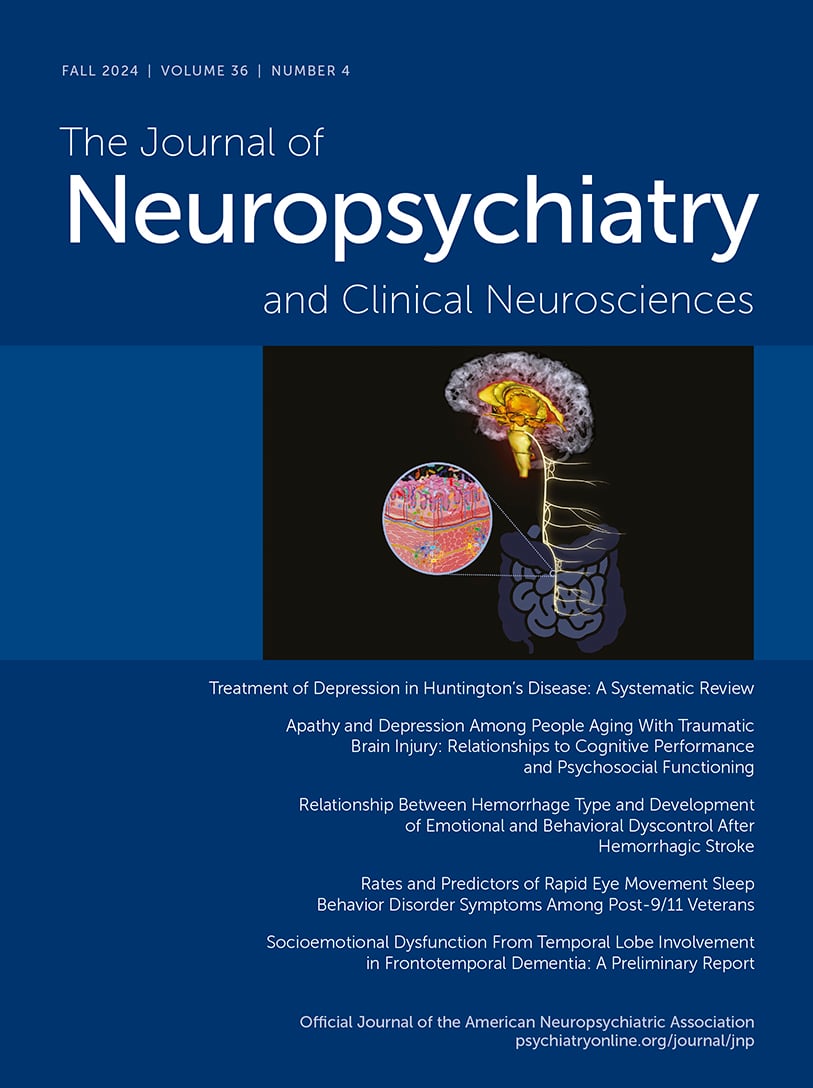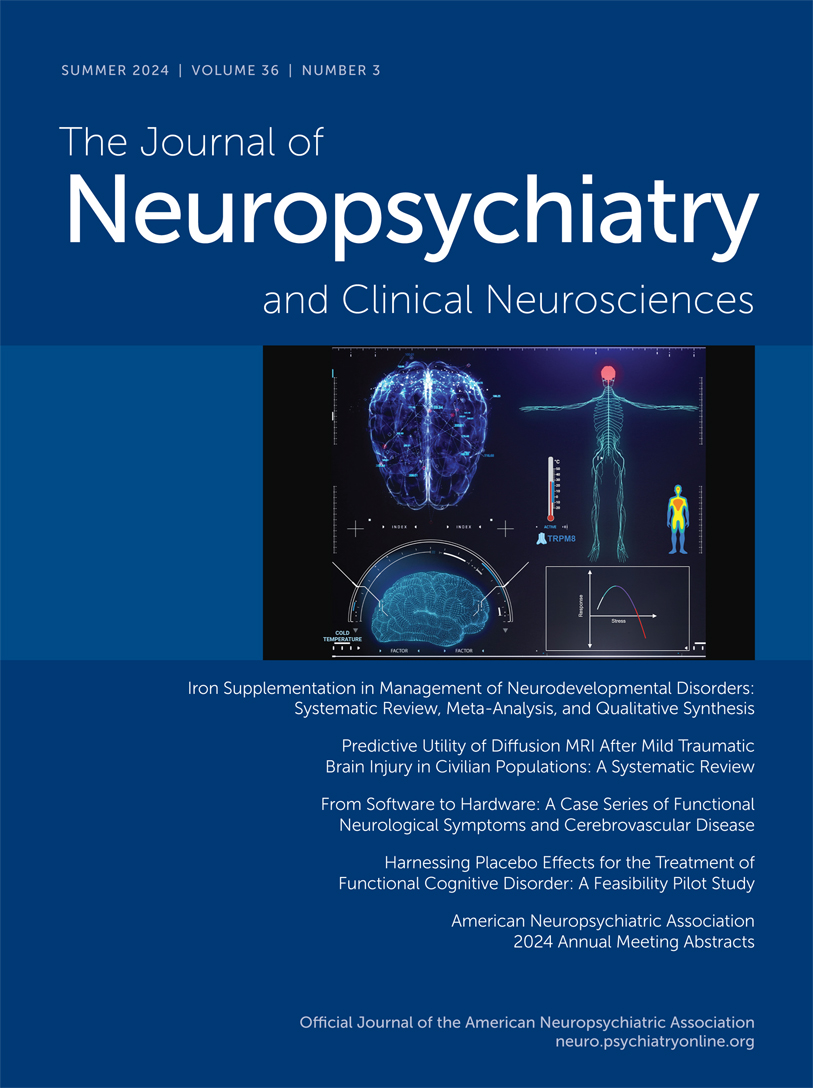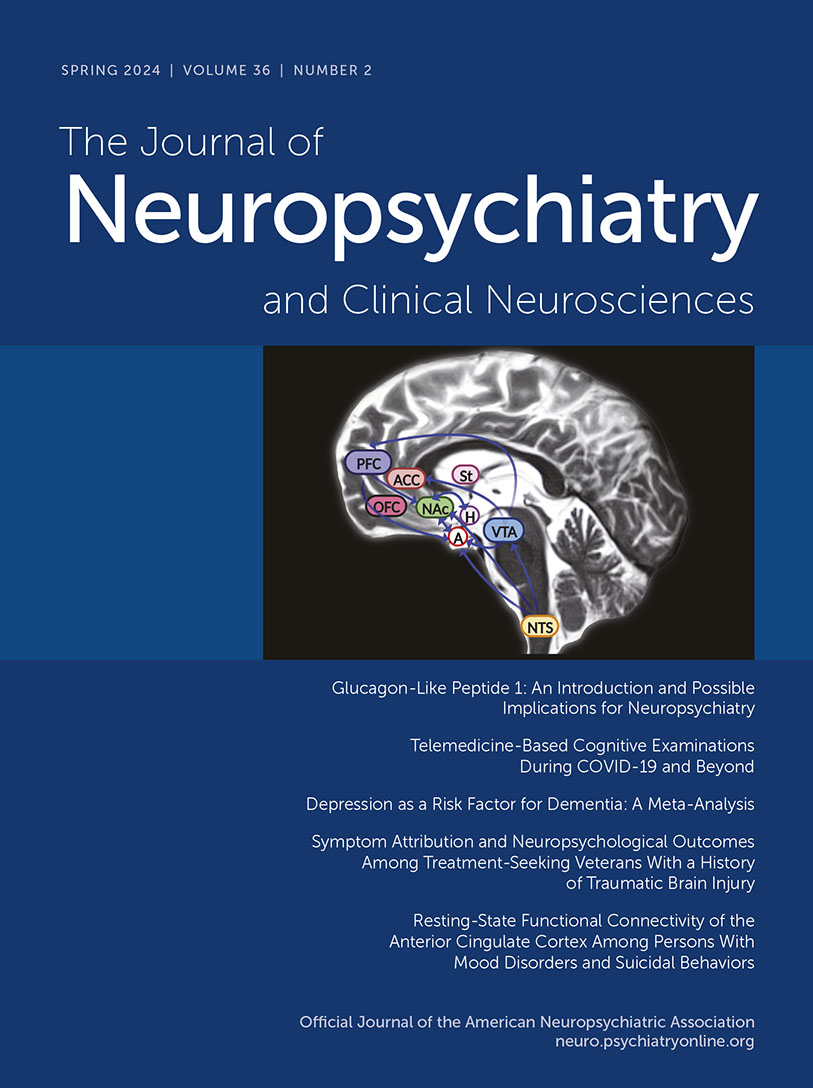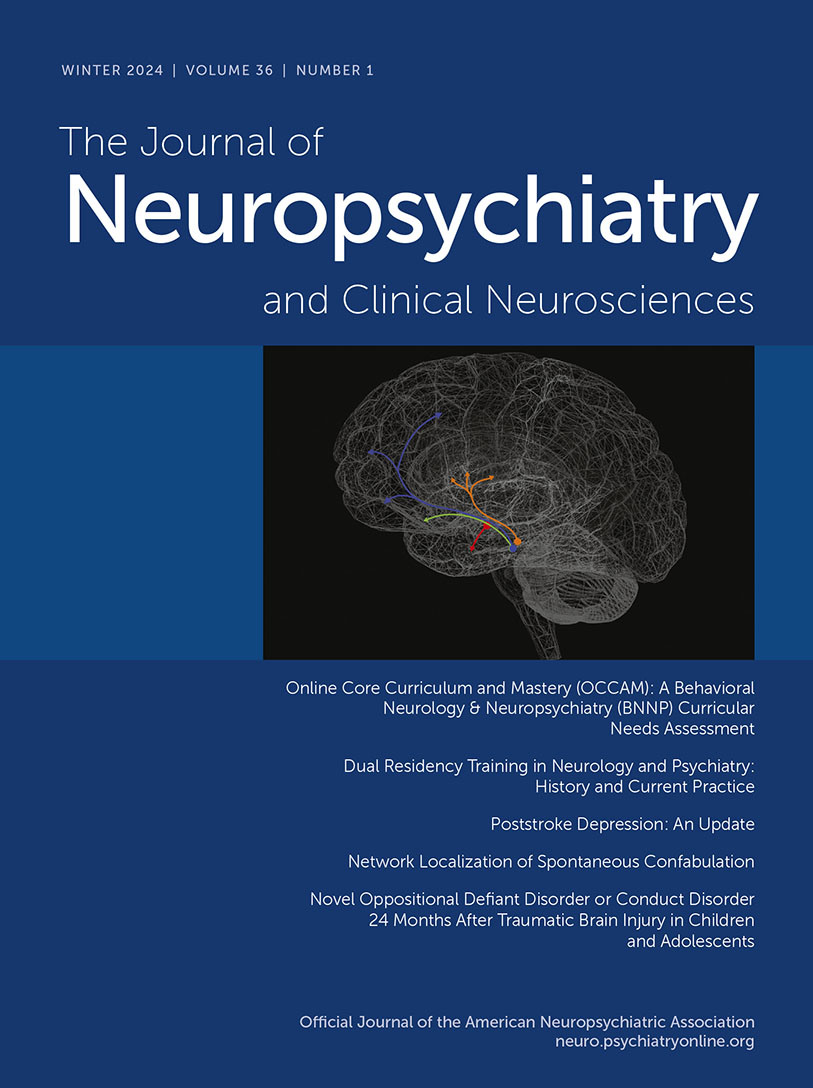The Journal of Neuropsychiatry and Clinical Neurosciences
- Volume 32
- Number 3
- July 2020
Windows to the Brain
Regular Articles
Publication date: 30 October 2019
Pages213–226Objective: Delirium remains underdetected as a result of its broad constellation of symptoms and the inadequate neuropsychiatric expertise of most medical-surgical clinicians. Brief, accurate tools are needed to enhance detection. Methods: The authors ...
https://doi.org/10.1176/appi.neuropsych.18110255Publication date: 04 December 2019
Pages227–234Objective: The association between cognitive performance and hemoglobin concentration has long been a topic of debate, but few data for middle-aged persons have been explored. The authors examined the association between anemia and cognitive performance at ...
https://doi.org/10.1176/appi.neuropsych.19040088Publication date: 27 February 2020
Pages235–243Objective: Huntington’s disease (HD) is an inherited neurodegenerative disease involving motor, cognitive, psychiatric, and behavioral impairments that eventually affect work-role functioning. There is limited research regarding predictors of workplace ...
https://doi.org/10.1176/appi.neuropsych.19090199Publication date: 27 February 2020
Pages244–251Objective: Persons with Huntington’s disease (HD) often have communication difficulties and cognitive impairments, making mental health assessment difficult. Informants close to the patient are often included in assessments. The authors investigated ...
https://doi.org/10.1176/appi.neuropsych.19080181Publication date: 14 February 2020
Pages252–258Objective: Persistent cognitive, somatic, and neuropsychiatric symptoms following mild traumatic brain injury (TBI) are influenced by posttraumatic stress disorder (PTSD), particularly in military patients. The authors evaluated the degree to which ...
https://doi.org/10.1176/appi.neuropsych.19090202Publication date: 30 October 2019
Pages259–265Objective: After attempting to move a plegic limb, patients with anosognosia for hemiplegia (AHP) may claim that limb movement occurred, even though the limb remained motionless. The authors investigated the characteristics, natural history, and anatomical ...
https://doi.org/10.1176/appi.neuropsych.19010008Publication date: 17 January 2020
Pages266–273Objective: In healthy individuals, the visuospatial attentional network consists of frontoparietal bundles; however, the anatomical organization of this network in persons with schizophrenia remains largely unknown. Using diffusion tensor imaging–based ...
https://doi.org/10.1176/appi.neuropsych.19040101Clinical and Research Reports
Publication date: 05 November 2019
Pages274–279Objective: The experience of embarrassment signals violations in social norms, and impairment in this social emotion may underlie much of the social dysfunction in behavioral variant frontotemporal dementia (bvFTD). The authors investigated whether ...
https://doi.org/10.1176/appi.neuropsych.19030053Publication date: 17 October 2019
Pages280–285Objective: This study examined whether a history of traumatic brain injury (TBI) is associated with age at onset of Alzheimer’s disease (AD) in three racial-ethnic groups. Methods: Data from 7,577 non-Hispanic Caucasian, 792 African American, and 870 ...
https://doi.org/10.1176/appi.neuropsych.19010002Publication date: 17 January 2020
Pages286–293Objective: Approximately 5%–20% of U.S. troops returning from Iraq and Afghanistan have posttraumatic stress disorder (PTSD), and another 11%–23% have traumatic brain injury (TBI). Cognitive-behavioral therapies (CBTs) are empirically validated treatment ...
https://doi.org/10.1176/appi.neuropsych.19020032Publication date: 14 February 2020
Pages294–301Objective: The authors compared baseline characteristics and reporting of psychosocial measures among veterans with seizures who were evaluated in-clinic or remotely via computer video telehealth (CVT). It was hypothesized that the CVT group would report ...
https://doi.org/10.1176/appi.neuropsych.19080177Case Reports
Introspections
Abstracts
Past Issues
View Issues Archive
Vol. 36 | No. 4

Vol. 36 | No. 3

Vol. 36 | No. 2
